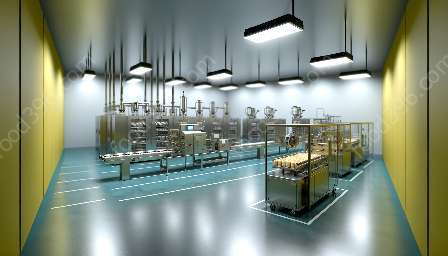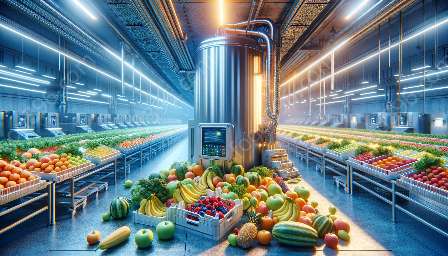Dehydration techniques are an essential part of food preservation and processing. They involve removing moisture from food items to extend their shelf life while maintaining their nutritional value and flavor. In this guide, we will explore various dehydration techniques, including air drying, sun drying, freeze drying, and more, and discuss their relevance to food and drink.
Air Drying
Air drying is one of the most common and oldest forms of food dehydration. It involves exposing food items to a constant flow of dry air until the desired level of dehydration is achieved. This technique is suitable for herbs, fruits, and vegetables. Air drying preserves the natural flavor and nutritional content of the food while extending its shelf life.
Sun Drying
Sun drying, also known as solar drying, is another traditional dehydration method that involves exposing food items to direct sunlight. It is a cost-effective technique that is often used in regions with abundant sunshine. Sun drying is suitable for fruits, vegetables, and meats. However, it requires careful monitoring to prevent contamination and spoilage.
Freeze Drying
Freeze drying is a modern dehydration technique that involves freezing food items and then removing the ice by sublimation under vacuum and low temperature. This process preserves the food's original texture, flavor, and nutritional content. It is widely used for fruits, meats, and instant coffee. Freeze-dried foods are lightweight, making them ideal for hikers, campers, and emergency food supplies.
Vacuum Drying
Vacuum drying is a method that involves placing food items in a vacuum chamber, reducing the surrounding pressure, and then applying heat to remove moisture. This technique is suitable for delicate foods such as herbs, spices, and certain fruits. Vacuum drying helps retain the color, flavor, and nutritional properties of the food, making it a popular choice for commercial food processing.
Dehydrators
Dehydrators are electrical appliances designed for home use to effectively remove moisture from food items. They provide a controlled environment with consistent airflow and temperature. Dehydrators are versatile, allowing for the dehydration of a wide range of foods, including fruits, vegetables, and meats. They are popular among food enthusiasts and homesteaders for preserving seasonal produce and creating healthy snacks.
Benefits of Dehydration Techniques
The use of dehydration techniques in food preservation and processing offers several benefits:
- Extended Shelf Life: Dehydrated foods have a longer shelf life compared to fresh produce, reducing food waste.
- Preservation of Nutrients: Dehydration helps retain the nutritional content of the food, including vitamins and minerals.
- Space Efficiency: Dehydrated foods are compact and lightweight, requiring less storage space.
- Convenience: Dehydrated foods are convenient for outdoor activities, travel, and emergency preparedness.
Compatibility with Food Preservation & Processing
Dehydration techniques are closely linked with food preservation and processing. They play a crucial role in extending the shelf life of food items and reducing the reliance on refrigeration and freezing. By removing moisture, dehydration inhibits the growth of bacteria, yeasts, and molds, thus preserving the quality and safety of the food. Furthermore, dehydrated foods are easily rehydrated, allowing for their use in various recipes and food processing applications.
Relevance to Food & Drink
The relevance of dehydration techniques to the food and drink industry is significant. Dehydrated foods are used in the production of snacks, instant meals, powdered beverages, and culinary ingredients. Additionally, dehydration allows for the preservation and utilization of seasonal produce, enabling the availability of fruits and vegetables throughout the year. This contributes to the diversity and sustainability of the food and drink industry.
Conclusion
Dehydration techniques are essential for food preservation and processing, offering a variety of methods to remove moisture from food items while maintaining their nutritional content and flavor. Whether through traditional methods such as air drying and sun drying or modern approaches like freeze drying and vacuum drying, dehydration plays a vital role in extending the shelf life of foods and facilitating their use in the food and drink industry.


















